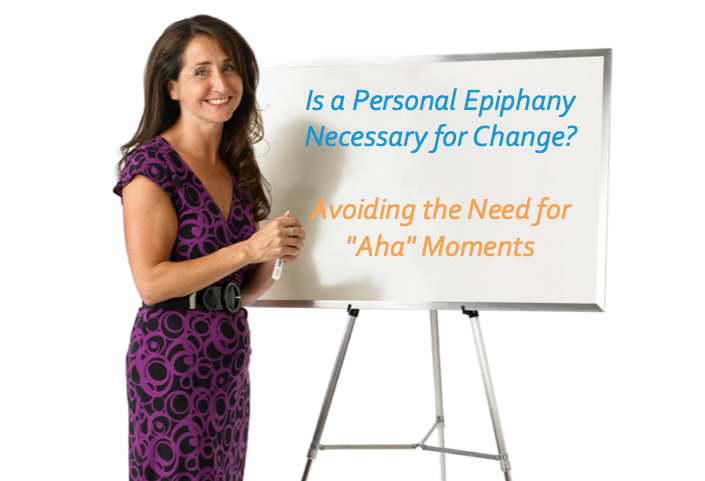Resources > Blog > Is a Personal Epiphany Necessary for Change? Avoiding the Need for “Aha” Moments

“YOU CAN’T CHANGE SOMEONE WHO DOESN’T SEE AN ISSUE IN THEIR ACTIONS”
As soon as I read this saying, I sighed. I sighed because, when it comes to effective workplace change, this simply isn’t accurate.
Many workplace leaders (and employees) assume, wrongly, that a necessary ingredient in workplace change is having someone “see” that their behaviour is problematic and “agree” that it needs to change. Because of this, leaders engage in endless debates and arguments with employees, with the goal of creating an “aha” moment in them while simultaneously convincing them of the “wrongfulness” of their conduct.
This is not necessary, is often unsuccessful and most commonly becomes an exercise in frustration for both the leader and the employee involved.
Leaders have the right to set reasonable and clear expectations regarding appropriate workplace behaviour, including and especially respectful workplace conduct and communication towards others. Employees may have personal views regarding what is or is not acceptable. They are welcome to share these with the leadersas part of ongoing workplace dialogue and are welcome to apply their own standards of behaviour during their off-duty hours.
In and at the workplace, however, leaders have a right to establish reasonable expectations and employees have an obligation to meet these expectations, regardless of their personal “views” on the subject.
When employees behave or communicate in an unacceptable manner, one that is inconsistent with workplace expectations, leaders have a right – indeed, a responsibility – to:
- Bring this to the person’s attention, in a clear and respectful manner;
- Remind the person of the workplace expectations;
- Assist the employee (where reasonably possible) in meeting these expectations; and
- Impose measured and where necessary, escalating consequences (disciplinary and/or non-disciplinary) when the employee is unable or unwilling to meet these expectations.
The “notice” to the employee about their behaviour is done most effectively by “mirroring” how he or she is “showing up” at the workplace. Describe, in some detail, the behaviours, commentary, attitude or performance of that employee and how it is interfering with the ability of others on the team to function effectively. Don’t assume the behaviour is malicious (it usually isn’t). Don’t assume the employee has insight or awareness into how he/she is “showing up” (theyusually don’t nor do many of us). And finally, don’t expect the employee to “agree” with you on any of this.
The employee does not have to “see an issue” with his/her behaviour in order to change. Positive change can and does come about when expectations are as clear as the consequences of failing to meet them.
The focus – in building respectful workplaces – is simply to ensure that individuals improve their behaviour, attitude and communication towards others so that no one fears anyone else or “walks on eggshells” around or because of them. That is it. No epiphanies. No “aha” moments. No forced consensus. Just a simple awareness of the “rules of the road” and a decision to follow those rules (assuming, of course, that one wants to keep one’s licence).
– Marli Rusen
Contact Marli to learn more about how her MIRROR Method can assist you with this process.
